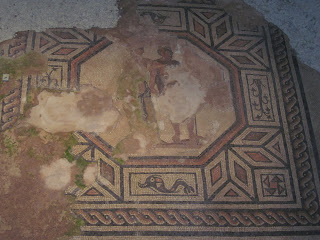Parthenope; cecini pascua, rura, duces…
(Mantua begot me, Calabria stole me away, Parthenope has me now; I sang of pastures, countryside and commanders.)
I keep forgetting that Mantua is the ancestral home of my favorite poet. Well, one of my favorite poets. My favorite Roman poet, at any rate—not counting Ovid or Catullus. Vergil is perhaps my intellectual favorite, or my historical-political favorite; before I read Vergil it never occurred to me that poetics and politics might intersect, or that their junction could ever prove a valuable site of inquiry. Since then I’ve not only learned to accept political philosophy as a component of literary production and criticism, but I’ve found that I can hardly read anything without considering the politics of the author’s milieu. I first read Vergil as a college freshman, and the professor who taught that class was the first person to suggest that I consider graduate school in the humanities. So in some ways I have Vergil to thank for my presence in Italy this month!

I took the above photo on my last trip to Italy, six years ago. Vergil’s tomb is outside of Naples, and I’m not going there this time. But there is also a monument to Vergil in Mantova, and since it lay along our walking path from the train station to the historic center of town, we had to pay a visit:

Verona, as I’ve mentioned, has a bit of a preoccupation with the Romeo and Juliet story, which is understandable, because aside from the romance of the narrative, it fuels tourism to the city! So around here, when someone mentions Mantua—or Mantova, more properly—to a tourist, the next sentence is always: “You know, where Romeo was exiled to.” But I wanted to visit Mantova in order to tour the Palazzo Ducale, the stronghold of the Gonzaga family from the mid-fourteenth century to the turn of the eighteenth. At school last year I had the opportunity to study some of the writings of Isabella d’Este (1474-1539), who was married to Francesco II Gonzaga (1466-1519). Isabella d’Este’s letters are filled with details of palace life, and I was eager to see where they had been written. Unfortunately, photography is not permitted inside the Palazzo, nor on the grounds:

(no, of course neither of us wrote that! we are much too well behaved, but we shared the sentiment... I would have photographed every inch of the palace if I could.) But here’s a view of the fourteenth-century façade from across the Piazza Sordello:

Before we went in, we had to take a gelato break. It was unbearably warm. At the Monumento Virgiliana there were no tourists, but a bunch of local kids playing in a fountain. We were very sad that we were too grown up to join them (or at least we had to pretend to behave like grownups). But one is never too grown up to enjoy some ice cream. We even had grown-up flavors: lemon (not too sweet, very refreshing) and fig (creamy, intensely figgy).

The Palazzo is a sprawling, labyrinthine construction. The palace of Isabella’s time was grand enough, but every subsequent generation of Gonzaga dukes added an extension, until by the mid-seventeenth century the Palazzo had effectively become a small town, with church, courtyards and gardens enclosed within its many expansive wings. Many of the palace walls are painted with trompe l’oeuil frescoes that give the effect of multicolored marble paneling; others are painted with geometric designs, or hung with extraordinary Flemish tapestries. The Zodiac Room, its ceiling painted with constellations, has walls papered over in a luxurious green-and-gold brocade. One of the grand halls had a rather puzzling motif painted around the walls just below the ceiling: a series of panels, each of a curtain partly drawn back to reveal horses’ hooves, in various positions. The description in the museum merely stated, “horses behind tents” and declined to explain why this motif was chosen or what it signified. Something to look up, I guess. The most celebrated room in the palace is the Camera degli Sposi, or bridal chamber, painted in 1465 with a series of frescoes by Andrea Mantegna (1431-1506), depicting several groupings of Gonzaga family members.
Crossing the Piazza Sordello on our way out of the Palazzo, I spotted a big black structure with the words MANTUA ME GENUIT printed on one of its walls. An official-looking gentleman in a suit and tie was standing in front of the door, as if guarding it, so I asked him what it was. The structure turned out to be a shelter for an archeological exhibit: an ancient Roman house was being unearthed here, in the piazza. Inside were several square meters of intact mosaic floor. The exhibit was due to close for the day in a view minutes, but the docent graciously ushered us in for a quick look. And he wouldn’t let us pay! Che galantuomo. It may have been because he was lazy—he wasn’t sitting at the ticket desk at that moment, after all—but I like to think it was because he was charmed by how my face lit up at the mention of Roman antiquities.


The next stop on our itinerary was the Teatro Bibiena, an eighteenth-century theater around the corner from the Palazzo. Sadly, it was closed for a film shoot; no visitors allowed. By then it was after 6PM (we had arrived in Mantova much later than planned, thanks to the utter confusion of the Verona train station), and by the time we could walk to the next sightseeing destination, it would be about to close. So instead we opted to do a little food tourism.
TO BE CONTINUED…
No comments:
Post a Comment